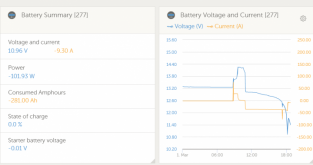What device are you using the capture the Ah's and how have you checked the calibration? I'm not saying 290+ isn't possible from those cells, but that's the highest I've ever seen reported on 272's by a good margin.Update to my 16 Lishens 272 that I received in february. At the moment I test every single cell, the capacity is between 290,8 and 294,0 Ah. I already testet 8 of 16.
I've done capacity tests on a couple 4 cell packs of lishens I received last week. They tested at 278 and 276. I'm sure individual cells might have tested a little higher, but they were all reaching the end quickly based on voltage. My BMS was showing over 290ah on my pack tests, but the BMS calibration is off a bit based on a check with my amp meter and the victron shunt I used as my reference.
That's great if you are seeing 290+, but just wondering how you are confirming the numbers since they seem crazy high for a 272 cell. We're talking about 8% higher than the specified capacity.



